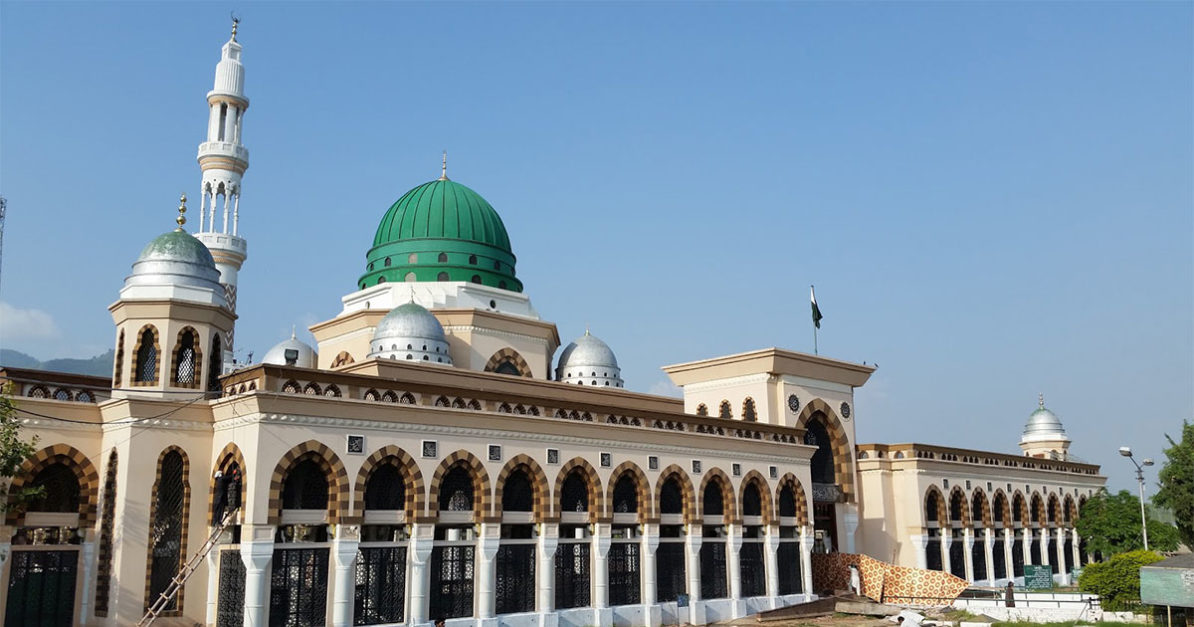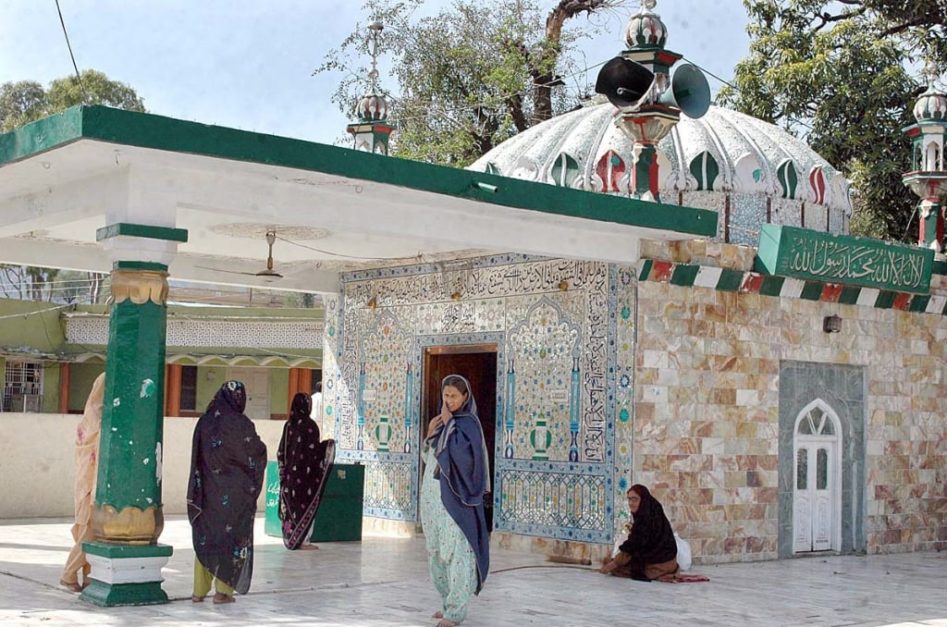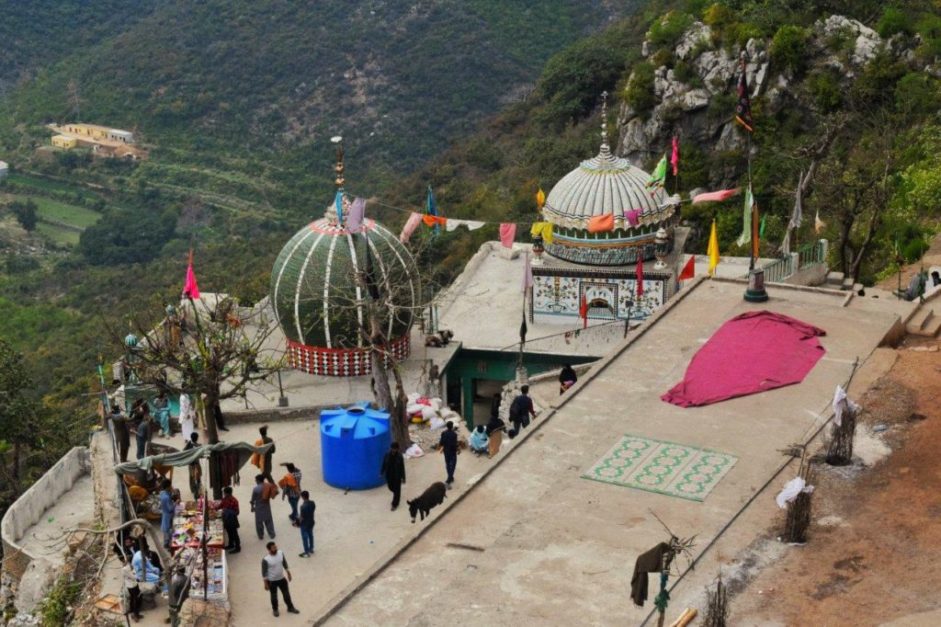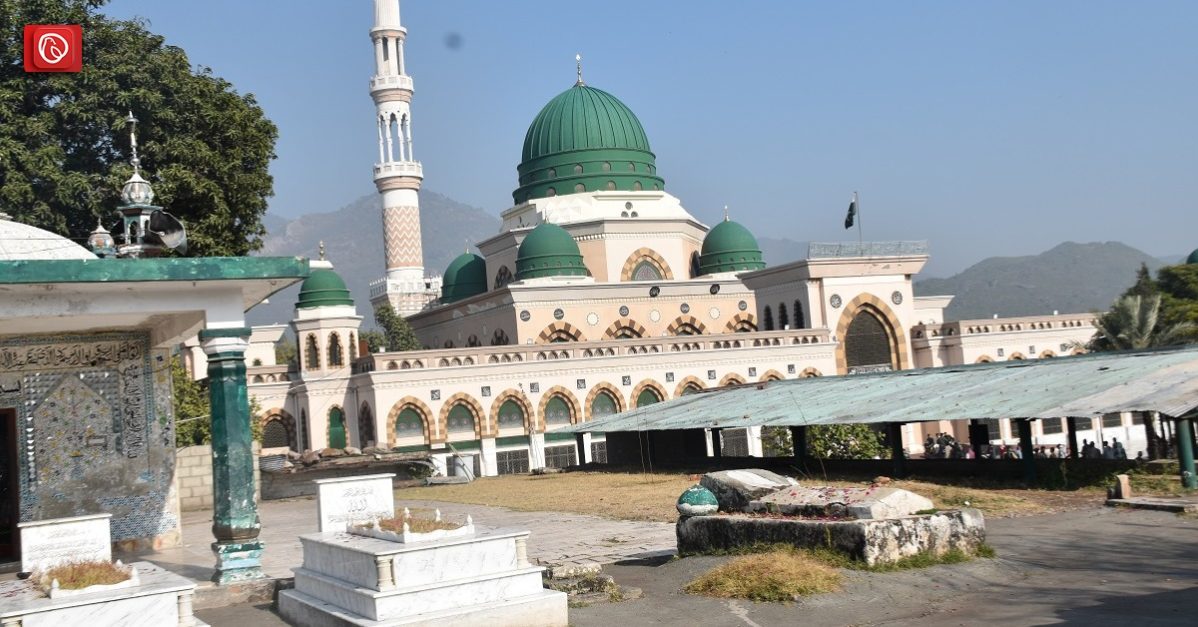Bari Imam, also known as Shah Abdul Latif Kazmi, was a Sufi saint who lived in the 17th century in Pakistan. He is widely respected as a spiritual guide, and his shrine in Islamabad attracts pilgrims from all over the country.
A shrine was built after his name, where thousands of devotees go yearly. Bari Imam is a significant pilgrimage site for millions of followers of the Silsila Qadria in Islamabad. Sufism is a branch of Islamic mysticism that focuses on self-control and spirituality.
In this blog, Graana.com will share more information about the famous site and its historical and social significance.
Location of Bari Imam Sarkar

The shrine of Hazrat Bari Sarkar is located in a small village called Nurpur Shahan, also known as Imam Bari Sarkar, in Islamabad. Nurpur Village is just behind the president’s house and parliament building and lies at the foothills of the beautiful Margalla Hills.
It is approximately 12 kilometres from Zero Point Islamabad, about a 22-minute drive, and around 7 kilometres from the Blue Area in Islamabad, which takes about 16 minutes to reach by car.
History of Shrine Imam Bari Sarkar
Mughal Emperor Aurangzeb built the shrine in the 17th century, and it was later renovated during British rule. Since then, the shrine has undergone several renovations, including a recent one by the Government of Pakistan. As a result of these renovations, the shrine now offers more space to accommodate a more significant number of people. It has separate entrances for male and female devotees.
The shrine is similar to other shrines in Pakistan and South Asia, providing visitors with a similar atmosphere and activities. It is a magnificent complex with various buildings, courtyards, and gardens. The shrine’s main building is adorned with beautiful Islamic calligraphy and intricate tilework, housing the tomb of Bari Imam.
Every year, thousands of people visit the shrine, especially during the Urs festival, commemorating the saint’s death anniversary.
Saint of Bari Imam – Shah Abdul Latif Kazmi

He was born in 1617 and passed away in 1705. Shah Abdul Latif Kazmi was a prominent and beloved saint of the Qadiri order or tariqa, which traces its origins to the Persian Sufi saint Abdul Qadir Jillani. Born in the village of Karsal in District Chakwal, Punjab, Shah Abdul Latif Kazmi belonged to a religious family. When he was eight years old, his family migrated to Baghan Village, now known as Aabpara in Islamabad.
He received his early education in the village of Ghourghushti in Attock District, known for its Islamic schools. There, he studied disciplines such as fiqh, hadith, and the Quran for two years. Shah Abdul Latif Kazmi also travelled to Iran, Iraq, and Central Asian states in search of advanced knowledge about Islam. He also performed Hajj, the pilgrimage to the holy cities of Mecca and Medina.
Upon returning to his homeland, Shah Abdul Latif Kazmi worked as a farmer, assisting his father. He used to graze animals in a nearby forested area known as Chourpur, which was infamous for criminal activities. Imam Bari delivered teachings of peace, love, and harmony to the residents, leading to the renaming of the area as Nurpur or Nurpur Shahan.
Shah Abdul Latif Kazmi would often visit a cave in the Margalla Hills for meditation. The cave, known as Loai Dandi, required a challenging hike of about 2-3 hours along a ridge of the hills. The trail to Loai Dandi is known for its 11,000 steps, 1100 feet elevation, and a length of 4.6 miles. Along the trail, there are shops and food stalls. However, visitors should be cautious of monkeys that may be aggressive if they have food items or fruits in plastic bags.
Architecture of The Shrine
The Bari Imam Shrine is a place of religious and cultural importance with a unique architectural design that can be found in Islamabad, Pakistan. It bears homage to Bari Imam, a Qadri order Sufi saint. The shrine’s structure combines traditional South Asian and Islamic architecture.
A bulbous dome that is characteristic of Mughal architecture and is frequently decorated with elaborate tile work sits at the center of the shrine. Usually, there are turrets or minarets built around this main structure. Visitors and worshippers can congregate in the open courtyard of the temple complex, which is paved with elaborate materials.
A large gate with calligraphy, phrases from the Quran, and decorative elements marks the entrance to the shrine complex. There are vibrant frescoes, Islamic calligraphy, and chandeliers within. The saint’s tomb, frequently covered by a decorative canopy or a straightforward structure, may be housed inside.
Sufi symbols, such as crescents, stars, and lines from Sufi poetry, are included in the pattern. The inside and outside buildings frequently include blue and white ceramic tiles with floral, geometrical, or religious motifs.
Worshippers can offer prayers and pay respects to the saint in a particular prayer room. Courtyards and outdoor areas provide places for contemplation and relaxation. The shrine is frequently placed in a picturesque location, surrounded by hills, trees, or other natural beauties.
Lastly, the Bari Imam tomb is a revered destination for pilgrims seeking blessings and spiritual solace. The Bari Imam Shrine’s architecture combines elements of South Asian and Islamic architectural styles to create a historically significant and culturally vibrant environment.
Things to Do
At the shrine of Bari Imam, various rituals are practiced daily, creating a mystic and serene atmosphere. Visitors are often captivated by the devotees engaging in various forms of worship. It is considered a must-visit place for those interested in religious sites.
Tourists often attend the annual Urs celebration held from May to June. A community kitchen called Langar operates at the shrine, providing free meals to all visitors.
Shrine of Imam Bari Sarkar

The shrine of Imam Bari Sarkar attracts millions of devotees and followers from across the country. They visit the shrine regularly, especially during the Urs or Mela, which takes place every year.
From morning till night, people come to offer Fatiha at the grave of Bari Sarkar. The shrine also offers free food known as Langar for the visitors. Devotees and locals actively participate in arranging and serving free meals. Outside the shrine, there is also a bustling bazaar offering various goods.
The shrine of Bari Imam in Islamabad continues to be a place of spirituality, devotion, and communal harmony, welcoming individuals from different walks of life to experience its rich history and atmosphere of peace.
Today, the shrine of Bari Imam continues to be a sacred place for devotees, who flock to pay their respects, seek blessings, and partake in the rituals and traditions associated with the shrine. The Langar, or community kitchen, ensures that no visitor goes hungry, fostering a spirit of communal harmony and inclusivity.
It is a place where the teachings of love, peace, and harmony are cherished, allowing visitors to connect with their faith and find solace in the presence of this revered saint. A visit to the shrine is not only a religious experience but also an opportunity to witness the rich history, vibrant celebrations, and deep-rooted spirituality that Bari Imam represents.
FAQs
Following are some of the frequently asked questions regarding Bari Imam:
Where is Bari Imam located?
Bari Imam is located in Nurpur Shahan, a small village in Islamabad, Pakistan, at the foothills of the Margalla Hills.
Who was Shah Abdul Latif Kazmi?
Shah Abdul Latif Kazmi, also known as Bari Imam, was a renowned Sufi saint who lived in the 17th century. He dedicated his life to spreading the teachings of Islam, emphasising peace, love, and harmony.
What is the significance of the annual Urs festival?
The annual Urs festival held at Bari Imam’s shrine commemorates the saint’s death anniversary. It is a vibrant celebration featuring music, poetry, and dance, attracting people from different backgrounds.
What can visitors expect at Bari Imam’s shrine?
Visitors can expect a serene and spiritually uplifting atmosphere at the shrine.
Are there any nearby attractions or activities at Bari Imam?
One of the notable activities near Bari Imam is the hike to Loai Dandi, a cave in the Margalla Hills where Bari Imam used to meditate. The trail offers stunning views and a chance to experience nature. The lakeview park is another tourist destination near Imam Bari.
This was all about Imam Bari. For more information, visit Graana.com.




